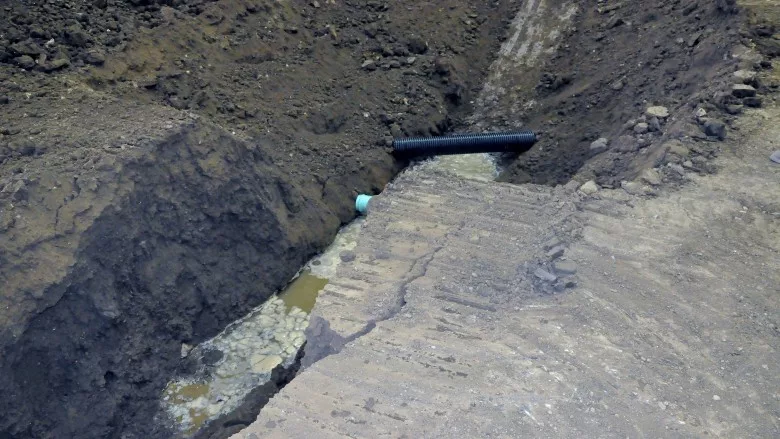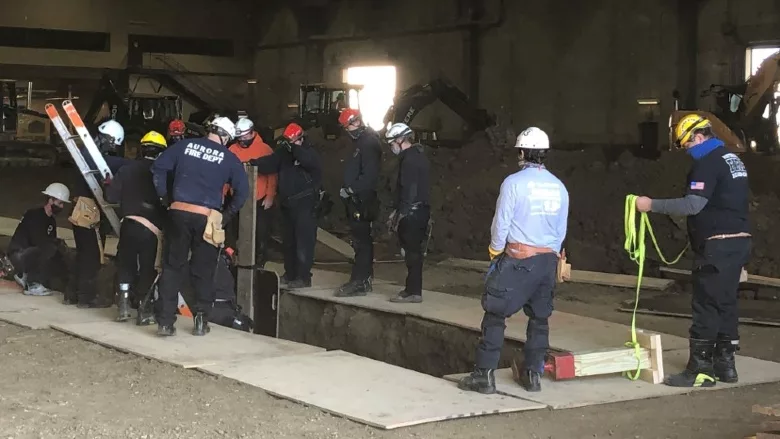Trenching Deaths in 2022 Already Outpace 2021
Fatalities Remind Industry of Trench, Excavation Risks

In the first half of 2022, 22 people died in trench and excavation accidents in the U.S., surpassing the 15 who died in all of 2021.
Source: Dave Bowers

Trench safety training at the Apprentice and Skill Improvement Program. Sending workers into a trench without the proper safety precautions and risk mitigation measures invites tragedy.
Source: Dave Bowers
I frequently see drilling companies post jobsite pictures of employees in trenches doing service line hookups, geothermal installations and other tasks. Often, I wonder if workers recognize the potential dangers of entering such a trench.
Twenty-two workers died in trench-related deaths in the first six months of 2022, easily topping 15 for all of 2021. Some examples from this year:
- In June, two workers died in Minnesota after the 7-foot trench they were working in caved in. It took emergency services 12 hours to recover the bodies.
- In May, two workers died in Florida while installing a water pipe in an 8-foot trench that collapsed.
- In three separate incidents in April, two brothers in Michigan perished while working in a 14-foot-deep trench, one man died in Idaho from a trench collapse and another died in a collapse in Tennessee.
- In March, a worker perished in a trench collapse in Las Vegas. It took rescue workers five hours to recover the body.
- Two workers were killed in February. In Indiana, a supervisor standing next to a 4-foot-deep excavation was buried when the trench collapsed, dragging him in, and another worker was buried in Florida.
- In January in Hawaii, a bystander freed a worker buried in a trench and administered CPR until rescue personnel arrived, but the worker died at the hospital the following day.
Sending someone into a trench not properly slope-shielded or shored invites tragedy. Yet, far too often, those jobsite pictures I mentioned show just that type of situation.
I recall a story I heard about a young man just starting out in construction as a plumber’s apprentice. He worked for company installing water lines. The trenches were not always properly sloped, shored or shielded. He even told his mother about having nightmares of being buried alive. Yet he continued to go to work and do his best to complete every task given to him. He was eager to make a good impression at the company. He once told his father the opportunity was the “best thing that had ever happened” to him. He found motivation in the prospect of getting his plumbing license after his four-year apprenticeship (while earning a decent wage).
Unfortunately, one day his nightmares became a premonition. Overnight, rain had filled the trench they began the day before. It took hours to pump the water out. Then, they started to dig to enlarge the 10-foot trench, which was not shored nor sloped. They had no trench box or ladder. The young man entered the trench to cut the pipe and the rain-soaked walls collapsed, burying him.
Imagine having to make that call to the loved-one of an employee. Luckily, with a little bit of planning, training and diligence, none of you should ever have to make that call.
Imagine having to make that call to the loved-one of an employee. Luckily, with a little bit of planning, training and diligence, none of you should ever have to make that call. A safe trench is easy to provide by simply sloping, shoring or shielding with a trench box. The human cost of getting it wrong greatly outweighs the fiscal cost of getting it right.
Next month’s article will cover the details of the OSHA trenching standard. Until next time, keep turning to the right.
Looking for a reprint of this article?
From high-res PDFs to custom plaques, order your copy today!






